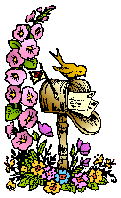Source: Liveright
Hardcover, 96 pages
I am an Amazon Affiliate
Nefertiti in the Flak Tower by Clive James is a collection of rhyming and metered poems that relies heavily on history, particularly that of WWII, to make connections about the resiliency of human kind in the face of horrifying adversity. The title poem, Nefertiti in the Flak Tower, does use the history of the Nefertiti bust as a German treasure that was moved and protected in a Flak Tower during WWII, towers that were built to protect cities like Berlin from air raids with guns and shelter citizens. Beyond the historically based poems, there are poems about the life of a writer and his friends and how even these glamorous lives of signing books can become mundane, but there are those moments that make even the most thankless jobs worthwhile.
From "Grief Has Its Time" (page 81) "Free of such burdens, I pursue my course Supposing myself blessed with the light touch, A blithesome ease my principal resource. Sometimes on stage I even say as much, Or did, till one night in the signing queue An ancient lady touched my wrist and said I'd made her smile the way he used to do When hearts were won by how a young man read Aloud, and decent girls were led astray By sweet speech. "Can you put his name with mine? Before the war, before he went away, We used to read together." Last in line She had all my attention, so I wrote"
James comes across as both romantic and removed. The rhyming poems can linger in the mind when the emotion is clear and connects with the reader, but there are other occasions when the rhymes seem forced and throw off the rhythm of the poem, creating a disconnect between the reader and the subject. Nefertiti in the Flak Tower by Clive James is a mix of some really great poems that will leave a lasting impression and those that fall a little flat on first and second reading.


For today’s 2014 National Poetry Month: Reach for the Horizon tour stop, click the image below:




 3. Walking Home: A Poet’s Journey by Simon Armitage from W.W. Norton’s Liveright Publishing.
3. Walking Home: A Poet’s Journey by Simon Armitage from W.W. Norton’s Liveright Publishing.





